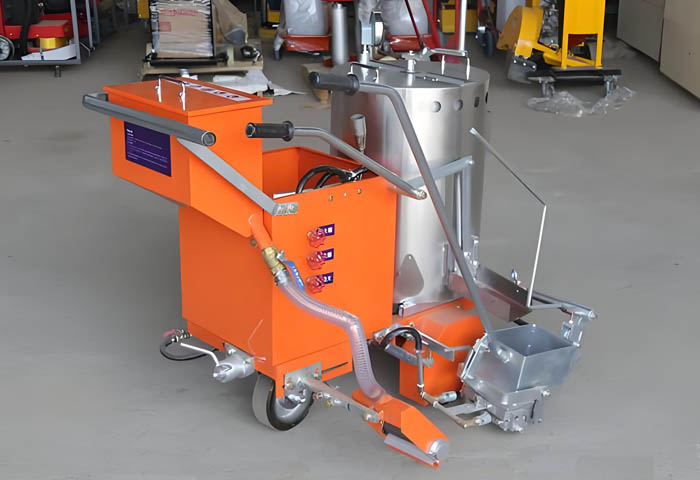As an important part of road traffic safety facilities, road marking is important for improving the efficiency and safety of road traffic. In the road marking construction process, we will mainly encounter three types of road marking: thermoplastic road marking, cold spray road marking and thermal transfer road marking.

Below, we will elaborate on these three types of marking.
Thermoplastic Road Marking
Thermoplastic road marking with its high efficiency and durability, become the mainstream choice in the current road marking construction. It uses hot melt coating, melted by heating and then coated on the road surface. This construction method is not only fast drying, but also forms a strong durability of the marking line, night reflective effect is excellent, so it is widely used in urban roads, highways and parking lots and other areas.

During the construction process, special heating barrel and road marking machine should be used. The thermoplastic coating is mixed proportionally and heated to a suitable temperature, and then evenly applied to the road surface by the road marking machine. In order to ensure the clarity and durability of road marking paint, the thickness and uniformity of the paint should be strictly controlled.
Cold Spray Road Marking
Cold spray road marking as an emerging construction method, with its construction speed, low cost and superior environmental performance and attention. The way mainly using cold spray coating and cold paint road marking machine for construction, coating by resin, pigment and additives, etc., can form a layer of wear-resistant, pressure-resistant and weather-resistant film on the road surface with good performance.

In the construction process, just mix the cold spray coating according to the proportion and pour it into the road marking machine, and then spray it evenly on the road surface through the nozzle. Compared with thermoplastic marking, cold spray marking dries faster and is more environmentally friendly. However, its durability and reflective effect is relatively weak, so the scope of use is somewhat limited.
Thermal Transfer Road Marking
Thermal transfer road marking is known for its unique three-dimensional sense and pattern making ability. The construction method using thermal transfer coating and marking machine, through the heating and pressurization of the coating and plastic film closely combined to form a three-dimensional sense of marking and pattern.
During the construction process, the thermal transfer paint is mixed proportionally and poured into the marking machine, and then sprayed onto the road surface through a nozzle. Afterwards, the surface of the coating is covered with a layer of plastic film, which is heated and pressurized to make it tightly bonded. After the film has cooled, it is removed to reveal road markings and patterns with a three-dimensional appearance. Although the production process of thermal transfer type marking is relatively complicated, its unique visual effect makes it widely used in specific places such as scenic spots and parking lots.
In summary, the three road marking types have their own characteristics and are suitable for different roads and construction needs. In practical application, we should choose the appropriate type of marking according to the specific situation to ensure road traffic safety and access efficiency.

Leave a Reply